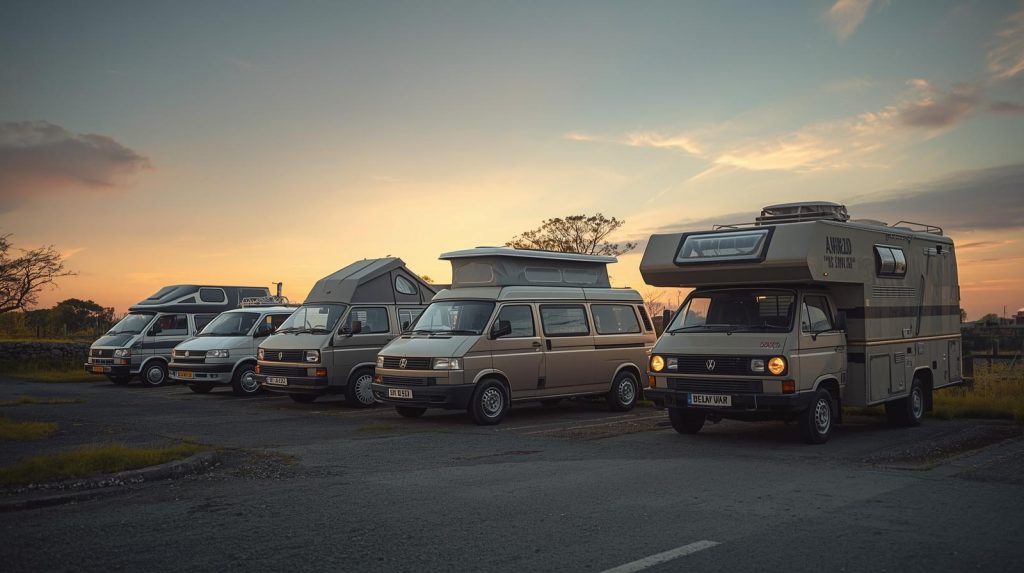
UK Vanlife Statistics 2025 the Reality of Life on Wheels
- Lay-by chat
- Vanlife
-
Sep 17
- Share post

Between Lay-Bys: Who’s Really Living the Vanlife?
Vanlife isn’t just a trend anymore —
it’s a movement, a necessity, and for some, the only roof they’ve got.
But who’s really living this life? You might picture dreadlocked blokes in battered Transits, or influencer couples flogging their solar panels on YouTube. The truth is messier, more surprising, and a hell of a lot bigger than most people realise.
In a Nutshell
Nobody’s counting, or possibly can count everyone on the road. These figures are estimates from surveys, councils, and charities.
Even so, the scale is bigger than most people think — half a million-ish folk living in vans across the UK.
Not included in that figure: Gypsy, Roma and Traveller (GRT) communities, who are counted separately by the government.
- Solo travellers make up more than half, and the majority of them are women.
- Families are rising — both by choice and through sheer economic necessity.
- Parking is the number one headache, beating breakdowns and bad weather.
Growth has been staggering — up more than 2,000% since 2019.
Back in the day
When I first parked up in a lay-by years back, I thought we were outsiders. Just a couple dodging bills and chasing a bit of freedom. Back then, vanlife was fringe — the odd traveller, a few wild campers, and the occasional student who couldn’t hack rent.
Fast forward to now, and it’s a different beast. Depending on who you ask, there are over 500,000 people in the UK living full or part-time in vans and campervans. That’s not a hobby — that’s a bloody housing sector in itself.
And here’s the kicker —
Those figures don’t even include GRT communities. They’re counted separately in council caravan counts twice a year. The vanlife stats I’m talking about here are everyone else: lifestyle vanlifers, priced-out renters, working families who had no choice but to shift into a vehicle.
And that’s where it gets interesting. The image doesn’t match reality.
52% of vanlifers are solo.
Most of those solo travellers are women — a stat that shocks most people.
Families aren’t just GRT.
In places like Bristol, Brighton, and Cornwall, ordinary working families — with kids, jobs, and school runs — are calling vans home.
Take Bristol as a case study. Back in 2019, the city counted around 150 live-in vehicles. Today, it’s nearer 650 vans and motorhomes with 800 people inside. That’s a quadrupling in just a few years. Walk around the Downs and you’ll see everything from rusty LDVs to shiny coachbuilts, all crammed with life.
But with growth comes friction.
Homeowners complain about parking, rubbish and sewage. Councils wring their hands. And van-dwellers themselves? They’ll tell you the same thing every time: finding somewhere legal, safe and free to park is the number one nightmare.
Surveys reckon 70% of vanlifers put parking at the top of their list of problems — above breakdowns, breakdown cover, or even the weather.
The Stats Beneath the Gloss
So, what do the numbers really say?
- Half a million and rising. A 2,280% increase in van-dwellers since 2019.
- Solo isn’t lonely. 52% are solo, and around 60% of those are women. That’s not a niche — that’s a demographic shift.
Families on the road.
Nearly half of all vanlifers are couples or families. And we’re not talking cultural Travellers here — these are young families who couldn’t pay rent or chose road schooling over mortgages.
The cost blind spot. About a third of people massively underestimate what vans cost to keep on the road. Year one looks cheap. By year two, the rust and repairs bite.
No official tally. Beyond Crisis estimates (12,000 in vehicles back in 2018) and local authority counts, there’s no national figure. Which means the true scale is probably even higher.
The Bigger Picture
The numbers might be fuzzy, but the trend is clear. Vanlife isn’t a quirky subculture anymore. It’s not just influencers in spotless Sprinters, and it’s not just the GRT communities who’ve been doing this for generations.
It’s nurses priced out of renting near hospitals. Families who lost houses to rising interest rates. People who got sick of working just to hand it all to a landlord. And yes — a fair few who just fancied a bit of freedom.
The government doesn’t really see it. Councils barely cope with it. And the rest of the country only notices when another van shows up outside their front window.
But the lay-bys tell the story. More vans. More people. More lives being lived off-grid, out of sight, but very much here.
Summary
So, what’s vanlife in 2025? Bigger than ever. More diverse than ever. And still wildly misunderstood. Behind the hashtags are women travelling alone, families with kids, and blokes who just needed a way to get by.
The official stats don’t count GRT communities — and they shouldn’t, because that’s a whole different cultural picture. But even without them, the vanlife numbers are staggering.
Half a million people. That’s not a trend, that’s a fact of life.
What’s your thoughts?
If you’re on the road, do these numbers ring true? Are you solo, with family, or something in between? And what’s your biggest daily hassle — parking, repairs, or just explaining yourself to people who don’t get it?
Stick a comment below — the more we share the real picture, the harder it is to ignore
Or pop over to our FB group if that’s the platform of your choice
Footnote:-
This blog was by no means a FB subs generator..
But If you’re living the vanlife for real — the solo travellers, families, and proper hardened lifers — and want to swap tips or share stories or maybe support from the like-minded, our Facebook community is a space for you: 2BOFFGRID Not for the glossy showroom newbies, just straight talk from people who’ve been there and wear the tee-shirt.